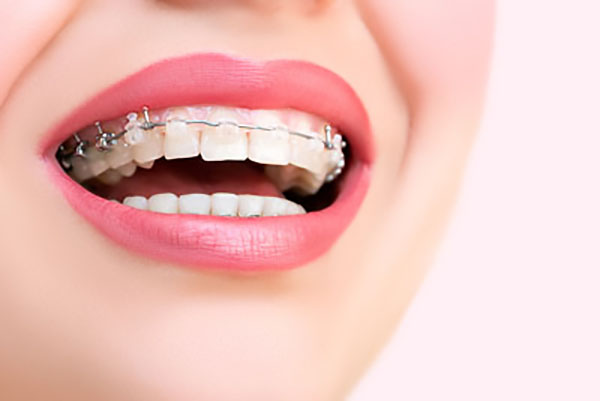5 FAQs about Clear Braces

Clear braces are a more discreet way to straighten teeth than metal braces. The two main types of clear braces are ceramic braces and clear aligners. Both are significantly harder to notice than metal braces. Ceramic braces are made with tooth-colored brackets and transparent wires, while clear aligners are made from transparent plastic trays. Both devices work by gradually pushing the patient's teeth towards better alignment.
Frequently asked questions about clear braces
Considering clear braces? Below, are the answers to commonly asked questions about this type of teeth straightening treatment.
1. Do clear braces get stained?
Yes. Staining is one of the major drawbacks that come with clear braces. The ceramic brackets that come with these do not get stained as easily, but the elastics used to attach the wires stain easily especially when beverages and foods with strong tannins are consumed. Examples of foods and beverages that can stain clear braces include:
- Coffee
- Curry
- Pasta sauce
- Red wine
- Beets
Smoking tobacco products can also lead to stains forming on the brackets and wires that come with clear braces. Smokers are often asked to explore other options. Dentists typically replace the elastics that come with clear braces every six weeks. This typically gets rid of most stains since these elastics are the most prone component to staining.
2. Can clear braces be used to treat an overbite?
An overbite occurs when the top set of teeth extend further than they should over the lower set, covering them up. Ceramic clear braces can be used to fix the same problems as metal braces and that includes overbites, overjets, crossbites, underbites and spaces between teeth.
However, clear aligners can only be used to fix an overbite that is caused by the patient's teeth being poorly-positioned.
3. What are clear braces made with?
It depends on the type of clear braces in question. Composite braces are made with tooth-colored composite resin, they are more prone to getting damaged than other types of clear braces.
Ceramic braces are made with ceramic brackets and transparent wires, while clear aligners are made from rigid plastic polymers.
4. Can clear braces be used for bottom teeth?
Yes. Clear braces can be used to treat teeth alignment issues that affect the upper and lower set of teeth. Metal braces might be recommended if the patient has a tight bite or other severe orthodontic issues.
5. How discreet are clear braces?
Ceramic clear braces are designed to blend in with the patient's teeth and they are virtually impossible to notice when worn. However, the more stained these appliances become, the easier it is to notice them. Clear aligners are even harder to detect since they are transparent trays.
Get started with clear braces
Clear braces of any type are known to provide discreet and positive results. Any questions or concerns regarding clear aligners or ceramic braces should be addressed by a general dentist. Reach out today to learn more or to get started with treatment!
Request an appointment here: https://frankforddentalcare.com or call Frankford Dental Care at (215) 302-1746 for an appointment in our Philadelphia office.
Check out what others are saying about our services on Yelp: Read our Yelp reviews.
Recent Posts
Not only does replacing missing teeth restore the smile’s appearance, but it also enhances oral health and helps preserve the jawbone. Dental implants are a reliable, durable solution for patients who require multiple tooth replacements, as they provide stability and a natural look and feel. There is more than one implant option available, with each…
Dental implants can provide a long-lasting solution for tooth loss. Many people choose this option because it looks and feels natural. Understanding the purpose of dental implants and how they work is key to helping you decide if dental implants are right for you.Dental implants are small titanium posts placed into the jawbone to replace…
Most people develop a cavity at some point in their lives, but children are especially prone to tooth decay. Dental sealants can be used to help lower the risk of getting cavities, protecting a child's teeth for many years. This supplemental treatment offers many benefits and is recommended by most dentists for virtually all children…
Your dentist may recommend a dental bridge if your case needs it. Every patient has a different set of needs. Proper assessment allows the dentist to suggest the right dental replacement. Here are the details on when a dental bridge may become your dentist’s recommendation.Dentists often encourage their patients to stop consuming tobacco. Following this…


